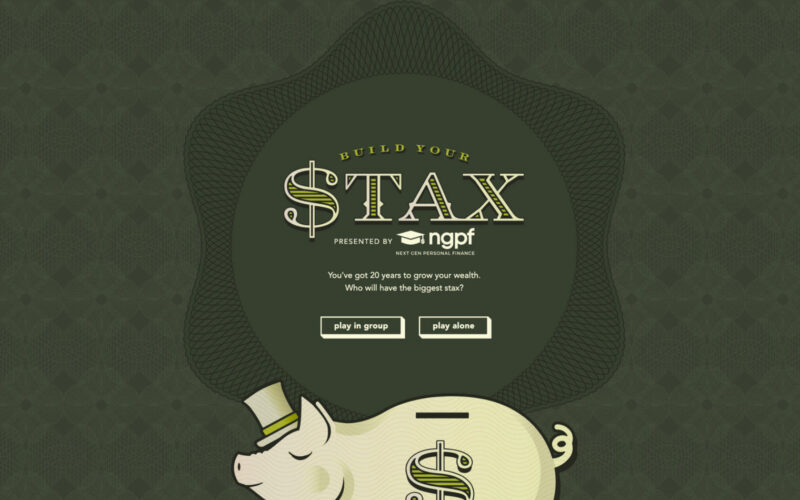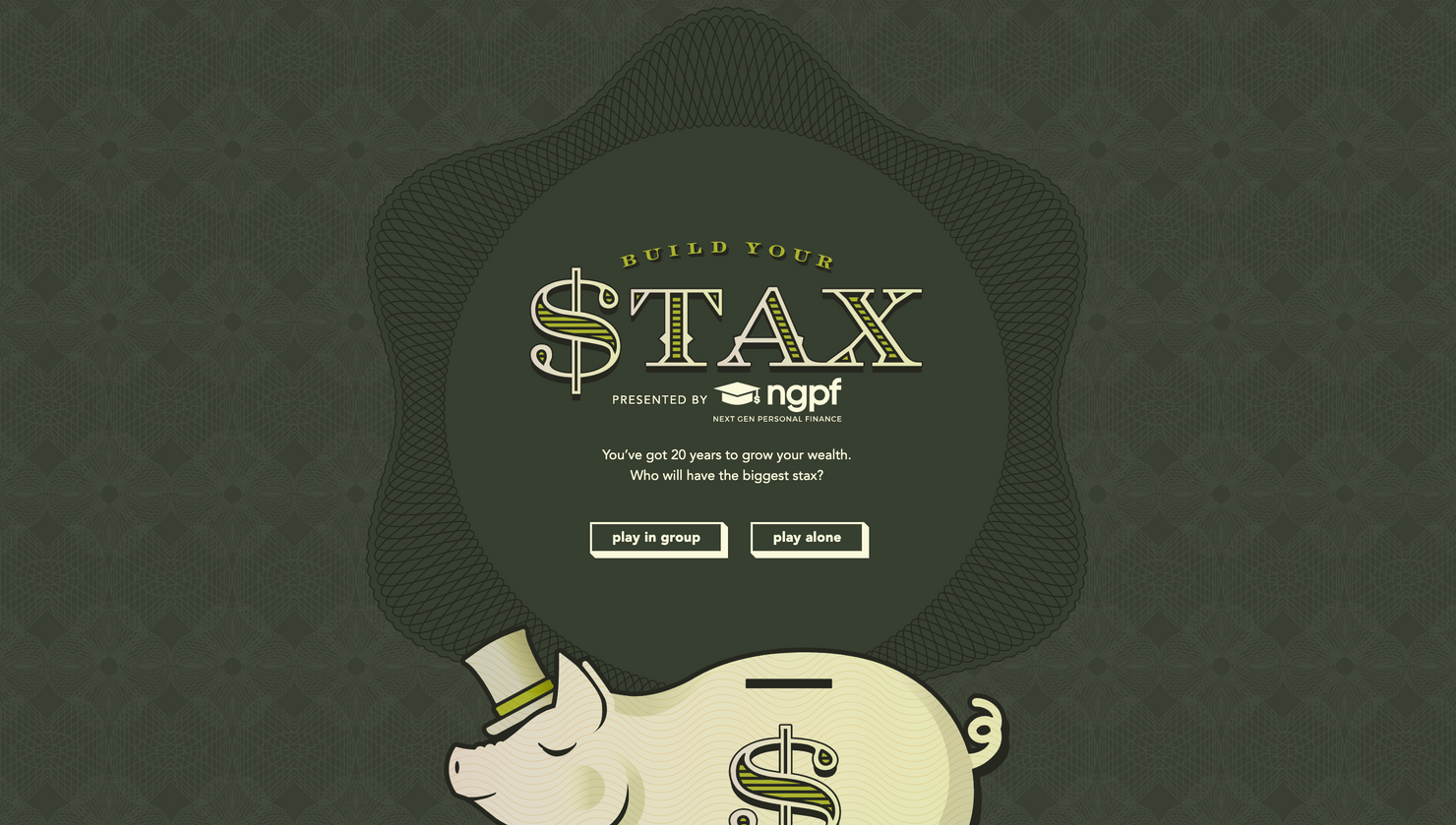This article was originally posted on ModernHusbands, and has been reposted here with permission.
Children on social media are being regularly exposed to gambling disguised as investing, and it’s dangerous on so many levels.
Kids are being bombarded with the idea that crypto is easy money investing, and for some kids their idea of the stock market is the pump and dump Gamestop scheme.
Young TikTokers are claiming they can make a fortune by simply following along with what rich people are investing in, can avoid taxes by setting up an S Corp, and can make thousands on options trading.
Alex Kearns started using Robinhood as a teenager. Robinhood allows for investors to easily trade options and make leveraged trades. A tragic example of how dangerous this can be is when he took his own life after mistakenly believing he’d lost nearly $750,000 in a risky bet on the stock trading app Robinhood.
A Bankrate survey found that social media makes nearly half of Gen Z and millennials feel negatively about their finances and only half of teens surveyed believe the stock market is a good thing.
Despite such chaos and tragedy, less than 1 in 4 high school students are guaranteed to take a semester long personal finance class before they graduate. Even though a personal finance class can change the lives of high school students,
This leaves teaching your kids about personal finance up to you.
The upside of teaching your own children is that you are positioned to help your child actually invest! I’ll save that for the end.
Strategies to teach your children how to invest:
- Don’t lecture. Use hands-on resources or experiences and allow them to learn through trial and error.
- Choose the right time. They’re not going to want to learn if the lesson feels forced.
- Connect lessons to your family values. I cannot say enough great things about the ideas shared in Ron Lieber’s book The Opposite of Spoiled.
- The world of investing is full of unfamiliar terms for many. Take advantage of the SEC’s free Investor.gov glossary if there is confusion about an investing term or product.
Games to use to teach your children how to invest:
Build Your STAX: Presented by NGPF
You’ve got 20 years to grow your wealth. Who will have the biggest stax?
The game takes 20-30 minutes to play. The instructions are embedded in the game. Make sure your child takes the time to read through them. The goal of the game is for kids to experience the emotional strain of trying to time the market or be a stock picker. As parents, we should use the game to reinforce two key lessons.
First, investing is a long term process that is boring. If you find yourself anxious about your investments, you are not investing the right way.
Second, attempting to time the market and pick stocks is not a winning strategy over long periods of time. Invest in diversified products such as index funds will lead to building significant wealth.
This is of particular importance because over long periods of time, investing in index funds (passive investing) is more effective 77% of the time than investing in actively managed funds.
Learn Play Invest: Presented by the Investment Company Institute Education Foundation
The game takes just a couple of minutes to play. The instructions are embedded in the game. Players invest $1,000, follow the market, and decide whether to “stay” or “sell”.
The game uses historical S&P 500 market returns over a 20 year period of time that changes each time you play. Much like STAX, there can be times where your kids get lucky and beat the market, but that is not something they can do consistently.
The lesson: do not try to time the stock market.
Simulations to use to teach your children how to invest:
The Trade-Off: Can you balance profit and purpose? Presented by the Financial Times
The game takes around five minutes to play. The instructions are on the front end of the game.
You take on the role of the founder and CEO of FlexBird, a technology company preparing for an initial public offering.
You can see the scoring at the top of the page as you play, which can help guide your decisions. If your approval score falls to 0, you will lose the game.
Your responsibility is to satisfy your investors by meeting quarterly targets to grow the business. This includes profitability, social responsibility, investing in long term growth, and being environmentally responsible.
The balancing act required to be successful playing the game will help your children recognize the challenges corporations face as they seek short term returns for and long term growth for investors, while also being socially and environmentally responsible employers.
The lesson: profit seeking corporations lead to returns for us, allowing us to retire, and when we invest in the market we invest in corporations faced with trade off choices faced playing the game.
So you want to be a tech investor? Try to beat the market on these tech IPOs
Presented by the LA Times
The game was released a couple of months after Snapchat [SNAP] went public. The challenge presented in the game is to guess when would have been the best time to buy in the first couple of months after SNAP went public.
There is often a lot of media attention surrounding big name companies going public. The lessons should be that nobody can predict what will happen. And for those who are trading, the counterparty is most often an institutional investor who understands the company far more than everyday investors like our children.
I have intentionally left out stock market games. My experience using them as a teaching tool is that kids will feel like investing is a short term process and the results can leave students in two dangerous places: they do well and thus become overconfident or they get clobbered and walk away believing investing is not for them.
Interactives to use to teach your children how to invest:
This live interactive of the stocks in the S&P 500 illuminates the market for kids.
The size of each box represents the percentage that stock represents of the S&P 500. Companies are broken into sectors, making it easier to point out the importance of diversification. The trading value for that moment is even shown through live updates, lighting the screen up in greens and reds.
The lesson: for your child to see for themselves that investing in an S&P 500 index fund is a diversified investment.
Asset Class Returns presented by Novel Investor
What I like about this interactive is it illustrates through real returns and sectors that no one sector always has the highest returns, and that it is impossible to predict which sector will have the highest returns.
The lesson: diversify your investments through multiple index funds.
The Investor.gov (SEC) Compound Interest Calculator
This is my favorite tool. Here is how I like to use it.
Present your child with two investors, let’s name them Desiree and Andy. Each invest through a Roth IRA (or Custodial IRA) for 20 years and earn the market average of 8%. Neither incur fees because they invested in no fee index funds.
Andy invests a total of $100,000, investing from the ages of 45 to 65.
This is how you calculate Andy’s scenario using the SEC Compound Interest Calculator:
- The initial investment is $1.
- The monthly contribution is $417.
- The length of time in years is 20.
- The estimated interest rate is 8%.
Desiree invests a total of $50,000. She begins to invest while in high school in a Custodial Roth IRA. She invests until she is 35 years old and then does not invest again. However, her original investments continue to grow and compound until the age of 65.
This is how you calculate Desiree’s scenario using the SEC Compound Interest Calculator:
- The initial investment is $1.
- The monthly contribution is $208.
- The length of time in years is 20.
- The estimated interest rate is 8%.
- You will see a balance with a graph illustrating the growth.
- Start over and enter the previous balance as the initial investment.
The lesson: Start young to take advantage of the magic of compounding! Below is an illustration of this example:

Here’s some comedy relief if you want to throw a chuckle into the conversation:
Resources and Books
Our book reviews are the cliff notes for cliff notes, with an explanation of how the book can support the efforts of men who want to be better husbands. You can follow along with our posts and use these reviews to decide which books make the most sense for you to help your children and for your children to read.
In my view, the Rich Dad Poor Dad is a book that every high school student should read to understand the basics of investing. “Rich Dad Poor Dad is Robert’s story of growing up with two dads — his real father and the father of his best friend, his rich dad — and the ways in which both men shaped his thoughts about money and investing. The book explodes the myth that you need to earn a high income to be rich and explains the difference between working for money and having your money work for you.”
The Investor.gov Students page is helpful if you’re seeking out practical straightforward resources.
Investing Product
In my view, there is no better pairing a parent can provide a child than a Kiddie Roth IRA and investing lessons. The interactive infographic below provides short video clips that can prepare you to have a meaningful conversation with your child about Kiddie Roth IRAs.
What is a Kiddie (Custodial) Roth IRA?
Let’s start with the basics. There are two types of IRAs – the Roth IRA and the traditional tax-deductible IRA. Roth IRAs are not tax deductible, but withdrawals made after the age of 59.5 are tax-free.
Contributions made to a traditional IRA are tax-deductible. However, tax deductions are only beneficial for higher-income earners. Withdrawals made after the age of 59.5 are taxed at your regular income tax rate.
A custodial IRA, sometimes referred to as a Kiddie IRA, is an individual retirement account that a custodian, usually a parent, can open as soon as the child has earned income. Once the custodial IRA is open, all assets are managed by the custodian until the child reaches age 18 (or 21 in some states).
There is no age that is too young to have earned income. For example, some elementary-aged children work for their parents’ business, model, or act.
According to the IRS (year 2021), If contributions are made only to Roth IRAs, your contribution limit is generally the lesser of:
- $6,000 ($7,000 if you are age 50 or older)
- Your taxable compensation
There are income limits to investing in a Roth IRA and some circumstances where a tax credit can be awarded for contributions (this is new as of 2021). Refer to the IRS website for these details.
What are the FAFSA benefits?
All colleges and universities require you to complete the FAFSA to receive financial aid. Some schools, primarily private schools, also require the CSS Profile in addition to the FAFSA.
As of 2021, the FAFSA considers a maximum of 5.64% of a parent’s assets available to pay for college. (e.g., savings, checking, 529).
Meanwhile, FAFSA considers 20% of a child’s accounts (e.g., checking, savings, brokerage) available to pay for college.
Yep – you read that correctly. Students are punished for saving money at 4x the rate as the parent or guardian. But there is a way around this!
Retirement savings will not affect your financial aid if you are not required to complete the CSS profile. Retirement savings, such as a Roth IRA, are not reported on the FAFSA. This is important because money saved that was contributed to a Kiddie or regular Roth IRA can be used to pay for college.
Of the schools which need a CSS to award their own grants and scholarships, there is the possibility that money invested in a Roth IRA can reduce the amount of financial aid extended.
What are the tax benefits?
Yes, anytime income tax is withheld from your child’s paycheck, they should file their tax return to recuperate their withholdings. They must file their tax return if they earn more than the standard deduction. And no, this does not hurt the parents.
As of 2022, the standard deduction for filing your tax return as a single is $12,950, which means you do not pay federal income tax on the first $12,950.
So what does this have to do with a Roth or Kiddle IRA? Most students won’t earn more than the standard deduction; if they do, so little of their dollars will be taxed that they don’t need the deduction.
In other words, most won’t pay tax on the income contributed to a Roth, tax is not paid on the growth, and tax is not paid on qualified withdrawals!
Visit the IRS website for more information.
What are the college savings benefits?
Roth IRAs were not designed for college savings but can be used to pay for a college education. Roth IRA accounts are funded with after-tax dollars, and what was contributed can be used without paying income tax or penalty. It gets a bit more complicated if investment earnings are used to pay for college, so if this is a consideration for you, you should consult a tax advisor or financial aid professional.
Roth IRA distributions used for college count as income toward the FAFSA, which can reduce need-based aid. A pro tip is to remember that FAFSA requires financials from the prior-prior year, and this means that if you time it right, withdrawals can be made closer to college graduation without impacting need-based aid.
Bear in mind that the financial risk of money in a Roth IRA is the risk of any invested dollars. You should consider an investment product that preserves wealth if you plan to use those funds for college.
What happens when you turn 18 (or 21 in some states)?
The custodial Roth IRA must be converted to a regular Roth IRA when your child reaches the age of 18 or 21, depending on the state. I went through this with my oldest child, which only takes a few minutes. I recommend ensuring your child fully understands the responsibilities of managing the account.
What about your first home?
According to CNBC, “…up to $10,000 in Roth IRA earnings can be withdrawn — free of both taxes and penalty — for a home purchase if you meet certain requirements.” This is in addition to any direct contributions made because those dollars were already eligible for taxation. Seek the advice of a tax professional if you are considering this strategy.
What are the tax benefits?
The money you invested in the Kiddie Roth IRA, converted into a Roth IRA, is growing tax-free!
Visit the IRS website for more information.
When can you withdraw the savings?
Complete withdrawals can be made from a Roth IRA at 59.5. Roth IRAs do not require withdrawals until after the death of the owner. There are additional ways in which money can be withdrawn penalty and tax free.
What are the tax benefits?
When withdrawals are made, they are not subject to federal income tax!














